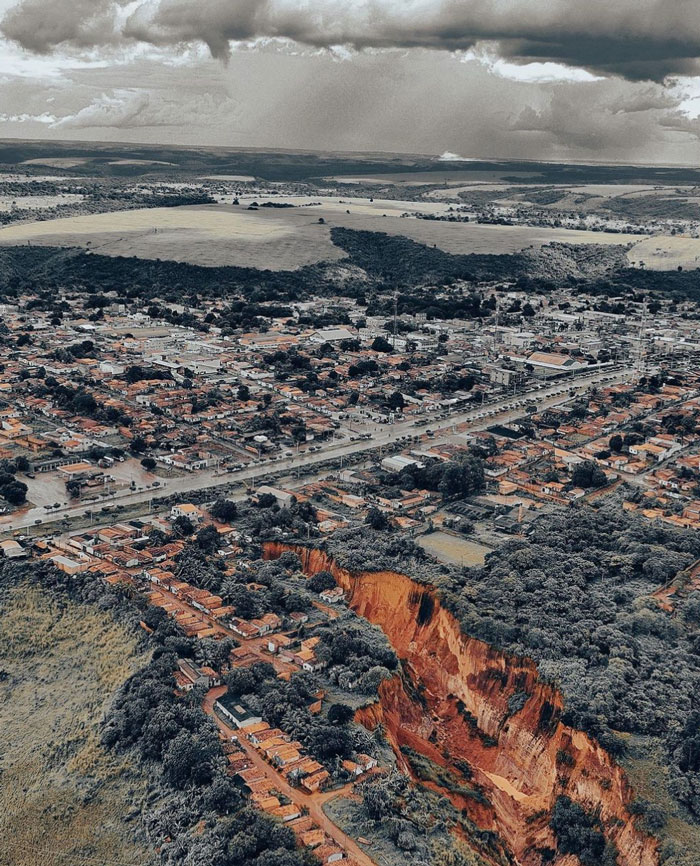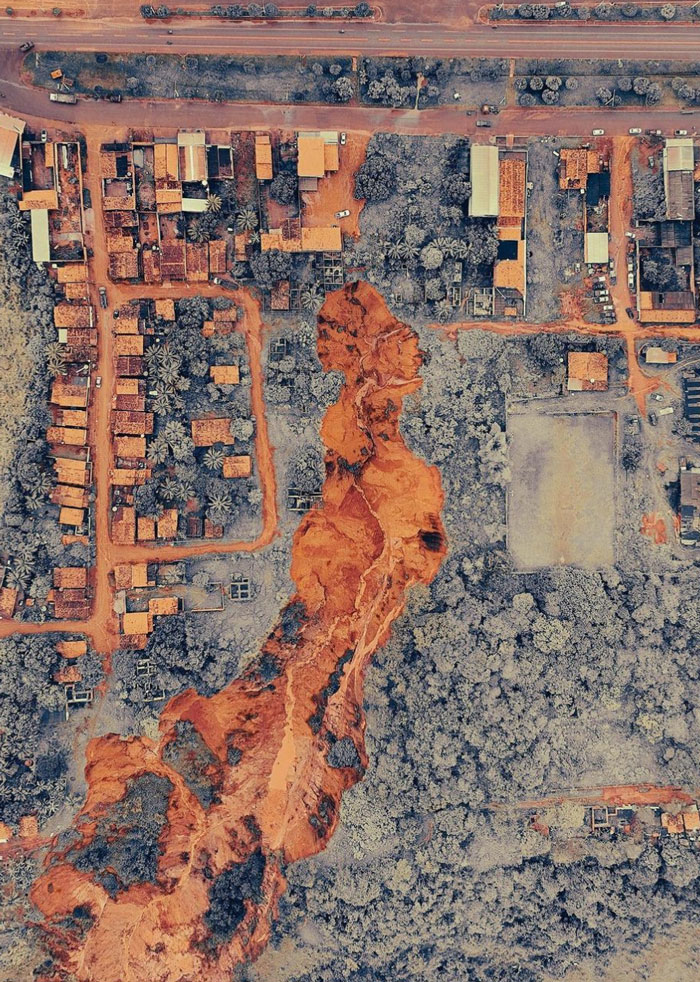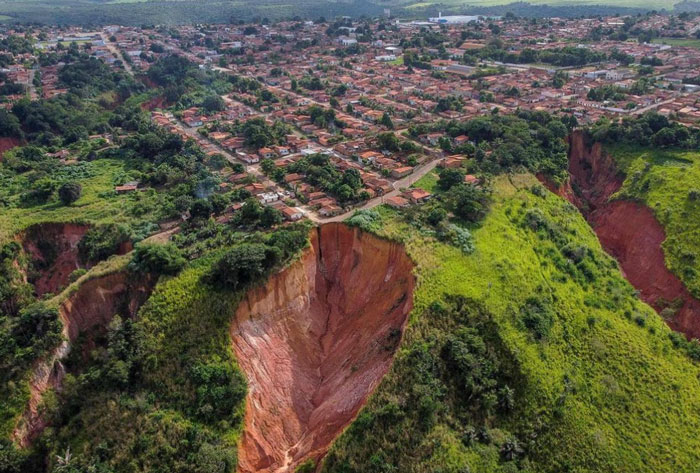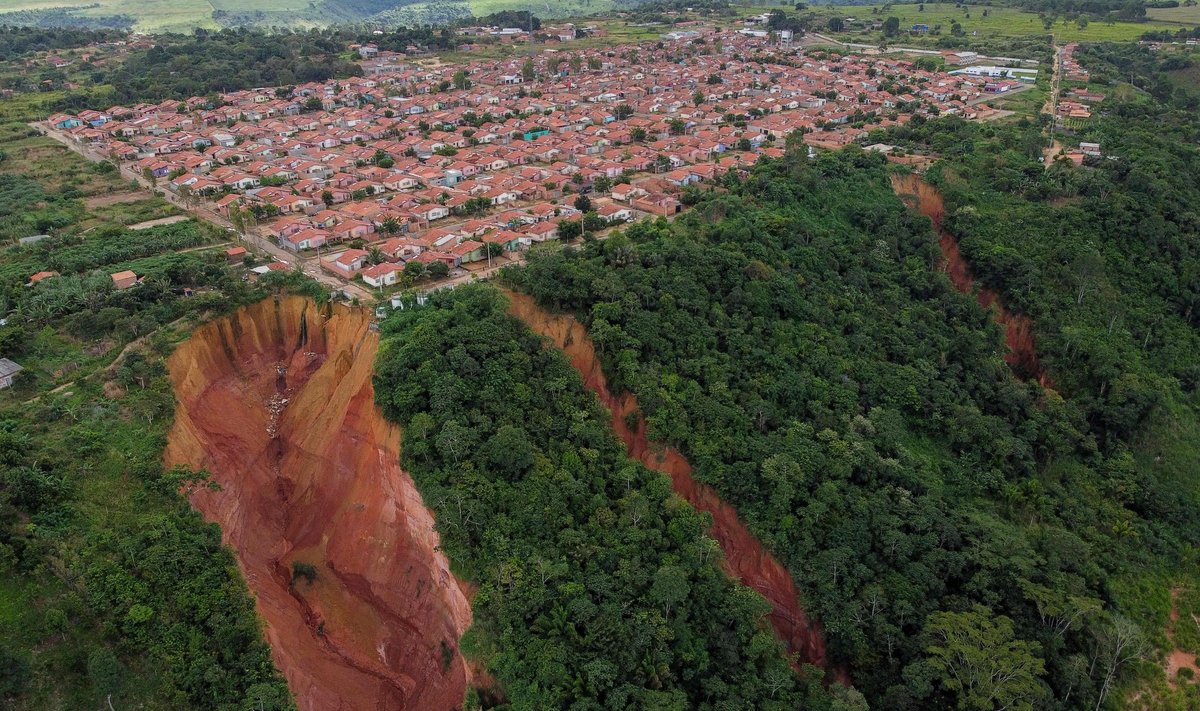The Brazilian city of Buritikupu is under significant threat – it can fall to the ground. Deforestation near the settlement has weakened the soil, making it difficult to absorb excess water. Soil erosion leads to the formation of huge craters near the city.
Craters up to 70 meters deep and landslides threaten to wipe out the city within the next 30-40 years. Around Buritikupu there are already 26 ravines more than 300 meters long, which were formed due to many years of deforestation. This year, heavy rains have made the situation even more dire, with authorities calling the situation a “public disaster.”

Aerial photographs show that the craters already reach right to the outskirts of the city. More than 50 houses have already been destroyed in the past decade, and over the past 20 years, seven people have died from falling into ravines. The authorities and the civil defense department monitor the growth and appearance of new holes in the ground and are involved in the relocation of families. The mayor of Buritikupu, Joao Carlos, called the situation difficult and said that the list of solutions to the environmental problem included compensation for displaced persons, the construction of new housing estates and the work of drainage services.

The appearance of ravines in Buritikupu began with cracks in the ground caused by rainwater. Over time, the ravines turned into huge craters. Without trees to reinforce the ground and bind the top layer of soil, surface water will continue to collect in vulnerable places, eroding the surrounding soil.

The region is heavily affected by deforestation, with Buritikupu losing 41% of its tree cover between 2000 and 2020. Deforestation in Brazil has made it harder for the Amazon rainforest to recover from droughts, fires, and landslides. The problem is only worsening: in the first six months of 2022, an area five times the size of New York City was cleared, the highest figure in six years.

